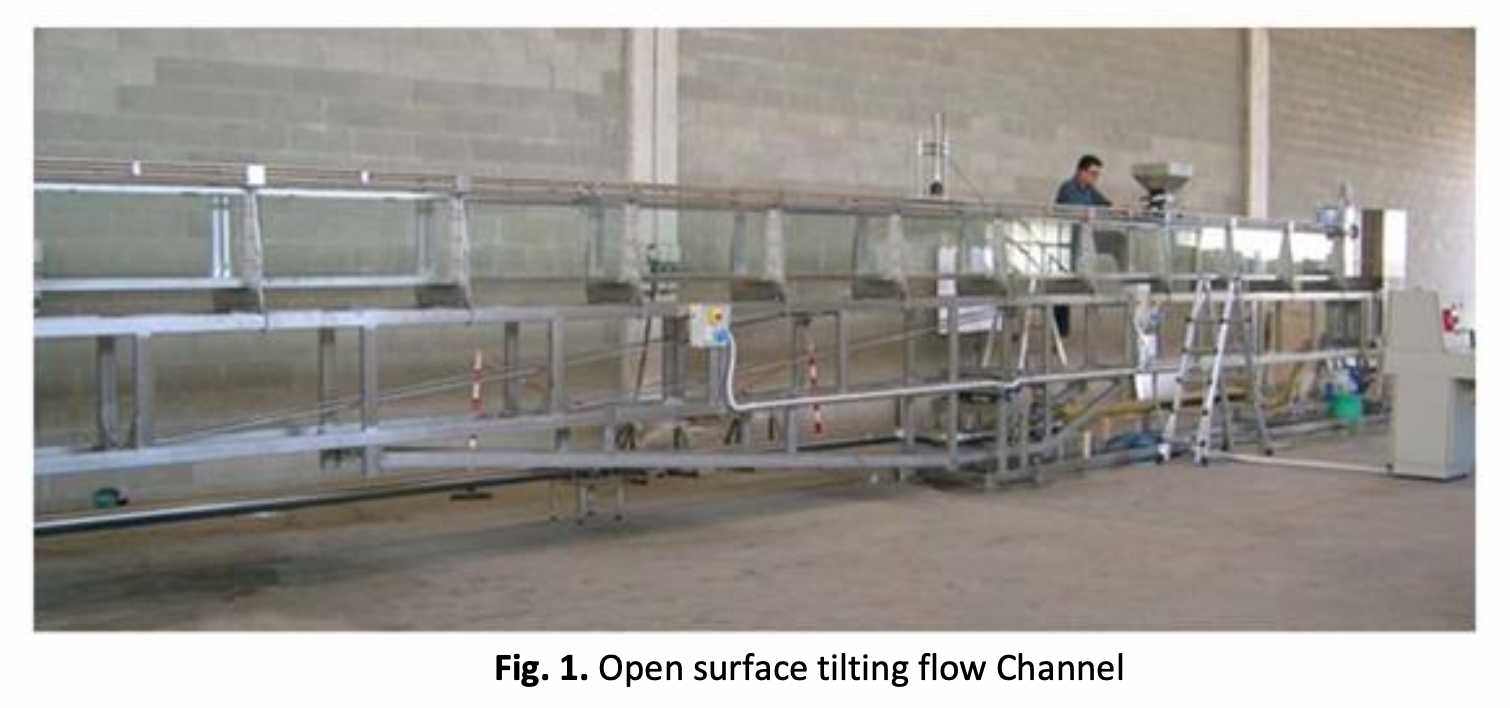Investigation of Energy Dissipation for Different Breakwater Based on Computational Fluid Dynamic Model
DOI:
https://doi.org/10.37934/cfdl.16.1.2242Keywords:
CFD, Wave transmission, incident wave, numerical beach, VOF, Dynamic mesh, breakwaterAbstract
In this research, the hydraulic performance of the combined shape breakwaters was investigated through a laboratory study supported by a numerical mathematical model CFD to examine the different model shapes depending on the transmissions wave coefficient Ct. In order to stabilize the incident wave Hi with the same characteristics, waves were defined through the UDF file for CFD model. To investigated the performance of breakwaters base on energy dissipations, different models were tested under various wave condition, water depth, and relative submerged depth. Result of this study are showed that the Transmission coefficient are increased with increased of incident wave high for all type of breakwater model, and for all models of breakwater, transmission wave height (Ht) are increased with increased relative submerged depth (Hs/Hi). The highest value for energy dissipations (1 - Ct) % are received for zero submerged depth in model of sloped steps model (M2) is 80 %. Ansys Fluent solver are adopted to modelling the transit flow condition with dynamic mesh to represent the flap motion type to generate wave. Numerical beach plays an important role in CFD model to prevent the reflection wave in lee side of breakwater and represent the absorbing shoreline. 240 grid per wave length are selected for Mesh independent solution and make acceptable result comparison with experimental.
Downloads
References
Bilici, Çağdaş. "A Model study on wave transmission through pile breakwaters." Master's thesis, Middle East Technical University, 2014. https://doi.org/10.9753/icce.v34.posters.18
Harris, Lucy. "MPM study of water wave interaction with porous seawalls." PhD diss., University of Cambridge, 2020.
Takahashi, Shigeo. Design of vertical breakwaters. PARI (Port and Airport Research Institute, 2002.
Dean, Robert G., and Robert A. Dalrymple. Water wave mechanics for engineers and scientists. Vol. 2. world scientific publishing company, 1991. https://doi.org/10.1142/1232
Abdul Khader, M. Ii, and S. P. Rai. "A study of submerged breakwaters." Journal of Hydraulic Research 18, no. 2 (1980): 113-121. https://doi.org/10.1080/00221688009499555
Douglass, Scott L., and Joe Krolak. Highways in the coastal environment: Hydraulic engineering circular 25. No. FHWA-NHI-07-096. United States. Federal Highway Administration. Office of Bridge Technology, 2008.
Dick, T. Milne, and A. Brebner. "Solid and permeable submerged breakwaters." In Coastal Engineering 1968, pp. 1141-1158. 1968. https://doi.org/10.1061/9780872620131.072
Seabrook S. R. and Hall K. R., “Wave Transmission at Submerged Rubble Mound Breakwaters”, COASTAL ENGINEERING, CHAPTER, (1998).
Calabrese, M., Diego Vicinanza, and M. Buccino. "Low-crested and submerged breakwaters in presence of broken waves." In Proceedings of HYDRALAB-II, Budapest, Hungary. 2003. https://doi.org/10.1142/9789812791306_0160
Tajziehchi, Mojtaba. "Experimental and numerical modelling of wave-induced current and wave transformation in presence of submerged breakwaters." PhD diss., UNSW Sydney, 2006.
Liao, Yi-Chun, Jyun-Han Jiang, Yi-Ping Wu, and Chung-Pan Lee. "Experimental study of wave breaking criteria and energy loss caused by a submerged porous breakwater on horizontal bottom." Journal of Marine Science and Technology 21, no. 1 (2013): 5.
Replumaz, Alexis, Yann Julien, and Damien Bellengier. "Concrete Breakwater for the Greater Tortue Ahmeyim Project for BP in Mauritania and Senegal." In Offshore Technology Conference, p. D032S085R013. OTC, 2021. https://doi.org/10.4043/30534-MS
Al Shaikhli, Hasan Ibrahim, and Saleh Issa Khassaf. "Stepped Mound Breakwater Simulation by Using Flow 3D." Eurasian Journal of Engineering and Technology 6 (2022): 60-68.
Hsu, Tai-Wen, Chih-Min Hsieh, and Robert R. Hwang. "Using RANS to simulate vortex generation and dissipation around impermeable submerged double breakwaters." Coastal Engineering 51, no. 7 (2004): 557-579. https://doi.org/10.1016/j.coastaleng.2004.06.003
Zhang, J-S., D-S. Jeng, PL-F. Liu, C. Zhang, and Y. Zhang. "Response of a porous seabed to water waves over permeable submerged breakwaters with Bragg reflection." Ocean Engineering 43 (2012): 1-12. https://doi.org/10.1016/j.oceaneng.2012.01.024
Young, D. Morgan, and Firat Y. Testik. "Wave reflection by submerged vertical and semi-circular breakwaters." Ocean Engineering 38, no. 10 (2011): 1269-1276. https://doi.org/10.1016/j.oceaneng.2011.05.003
Liao, Yi-Chun, Jyun-Han Jiang, Yi-Ping Wu, and Chung-Pan Lee. "Experimental study of wave breaking criteria and energy loss caused by a submerged porous breakwater on horizontal bottom." Journal of Marine Science and Technology 21, no. 1 (2013): 5.
Hajivalie, Fatemeh, and Seyed Masoud Mahmoudof. "Experimental Study of Energy Dissipation at Rectangular Submerged Breakwater." Proc. of ICFM8. Sendai, Japan (2018).
Ringe, Shivansh. "Designing of One Directional Wave Tank." (2020).
Abobaker, M., Addeep, S., Afolabi, L. O., & Elfaghi, A. M. "Effect of Mesh Type on Numerical Computation of Aerodynamic Coefficients of NACA 0012 Airfoil. " Journal of Advanced Research in Fluid Mechanics and Thermal Sciences 87, no. 3 (2021): 31-39. https://doi.org/10.37934/arfmts.87.3.3139
Poguluri, Sunny Kumar, and I. H. Cho. "Wave dissipation over a horizontal slotted plate with a leeside vertical seawall: analytical and numerical approaches." Coastal Engineering Journal 63, no. 1 (2021): 52-67. https://doi.org/10.1080/21664250.2020.1850396
ANSYS, Inc. ANSYS FLUENT User's Guide, Southpointe 277 Technology Drive Canonsburge PA 15317; USA, 2010.
Osman, M. S., J. A. T. Machado, and Dumitru Baleanu. "On nonautonomous complex wave solutions described by the coupled Schrödinger–Boussinesq equation with variable-coefficients." Optical and Quantum Electronics 50 (2018): 1-11. https://doi.org/10.1007/s11082-018-1346-y
Novak, Pavel, Vincent Guinot, Alan Jeffrey, and Dominic E. Reeve. Hydraulic modelling: An introduction: Principles, methods and applications. CRC Press, 2018.
Sharifahmadian, Amir. Numerical models for submerged breakwaters: coastal hydrodynamics and morphodynamics. Butterworth-Heinemann, 2015.



























